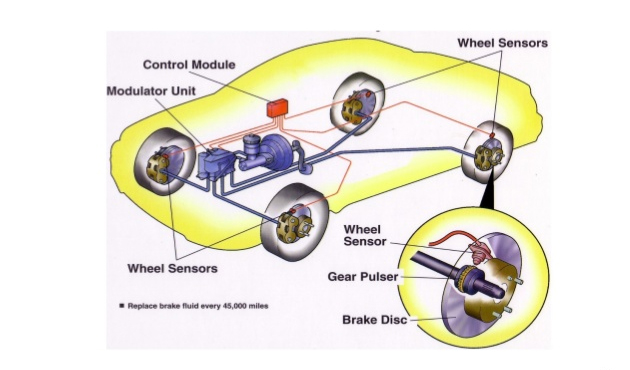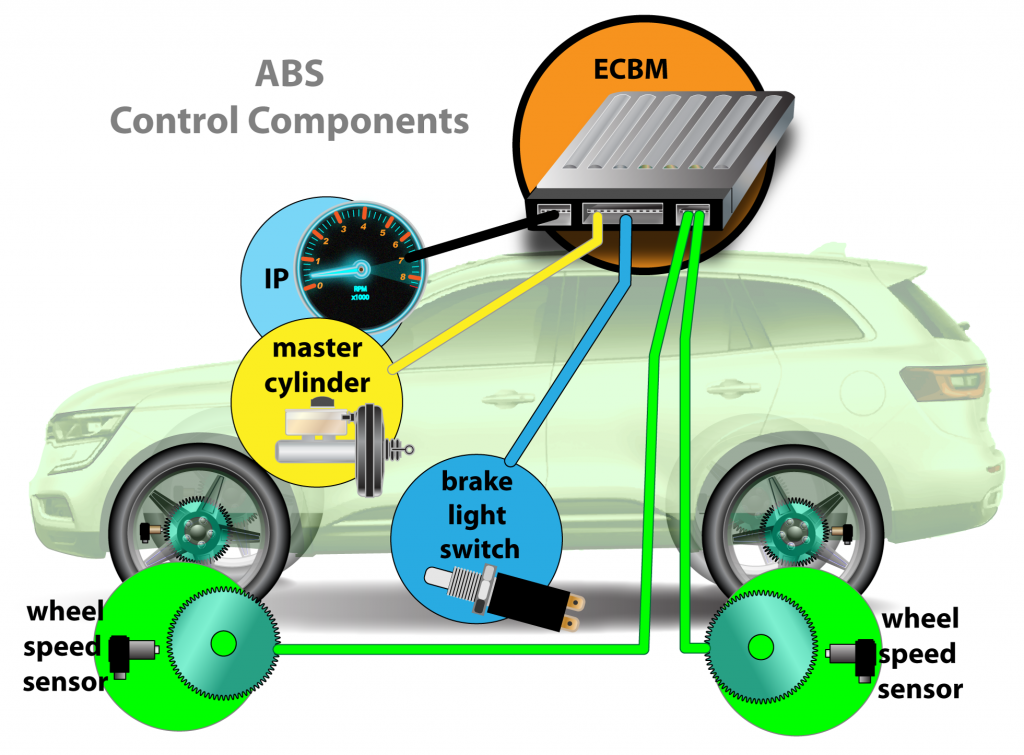The Anti-lock Braking System (ABS) is one of the most critical safety features in modern vehicles, especially when it comes to maintaining control during emergency braking situations. Mazda has incorporated this advanced technology into its vehicles, ensuring drivers experience better stability, reduced risk of accidents, and improved overall driving performance. The ABS system works by preventing the wheels from locking up during hard braking, which can cause skidding or loss of control. In this article, we’ll delve into how ABS functions, its benefits, and why Mazda’s ABS system is crucial for both safety and comfort on the road.
What is the Anti-lock Braking System (ABS)?
The Anti-lock Braking System (ABS) is a safety feature designed to prevent a vehicle’s wheels from locking up during emergency braking. When a driver applies the brakes forcefully, the wheels can stop rotating, causing the vehicle to lose traction with the road. This leads to skidding, reduced steering control, and a higher risk of accidents. ABS automatically modulates brake pressure, ensuring the wheels don’t lock up, allowing the driver to maintain control of the vehicle even during hard braking.

ABS is typically made up of three main components: wheel speed sensors, a hydraulic control unit, and an electronic control unit. Together, these parts monitor the wheels’ rotation and adjust the brake pressure to prevent them from locking. This results in better steering ability, improved safety, and shorter stopping distances, particularly in slippery conditions.
How Does Mazda’s Anti-lock Braking System Work?
Mazda vehicles are equipped with an advanced Anti-lock Braking System (ABS) designed to improve vehicle safety and handling. The system uses wheel speed sensors to monitor the rotation of each tire. When the system detects that a wheel is about to lock up, it automatically adjusts the brake pressure by releasing and reapplying the brakes in quick succession. This process is repeated several times per second, allowing the wheels to continue rotating and maintaining traction with the road.
The hydraulic control unit plays a crucial role in regulating brake pressure. It works by either reducing or increasing the brake force applied to the wheels based on the information provided by the wheel speed sensors. The electronic control unit processes all the data from the sensors and determines when and how much to adjust the brake pressure.
Mazda’s ABS system is highly responsive and works seamlessly in various driving conditions, including wet, icy, or muddy roads. It enhances the vehicle’s stability and ensures that the driver can maintain control, even during sudden stops.
Key Benefits of ABS in Mazda Vehicles
1. Improved Vehicle Control
One of the most significant benefits of Mazda’s ABS is the enhanced vehicle control it provides. During hard braking, the system ensures that the wheels do not lock up, which allows the driver to maintain steering control. This is particularly crucial in emergency situations, such as avoiding obstacles or navigating slippery roads. In vehicles without ABS, locked wheels would prevent the driver from steering, increasing the risk of accidents.
With ABS, Mazda vehicles provide better stability, making it easier to avoid dangerous situations and stay on course even in the most critical conditions.
2. Reduced Risk of Skidding
Skidding occurs when the tires lose traction with the road, which can result in a loss of control. This is especially dangerous in adverse weather conditions, such as rain or snow. ABS prevents skidding by maintaining tire rotation and allowing the driver to steer while braking. By regulating brake pressure, the system helps reduce the chances of the vehicle sliding uncontrollably, providing a safer driving experience.
Mazda’s ABS system has been calibrated to respond quickly and efficiently in a variety of road conditions, ensuring that drivers stay in control no matter what.
3. Shorter Stopping Distances
ABS can reduce stopping distances, particularly on slippery surfaces. When braking hard on wet or icy roads, tires without ABS can lock up, resulting in longer stopping distances. By preventing wheel lock-up, Mazda’s ABS ensures that the vehicle stops more quickly, reducing the chance of collisions. This is especially beneficial in emergency braking scenarios where every fraction of a second counts.
In addition to shorter stopping distances, ABS also helps distribute braking force evenly across all four wheels, which improves overall braking performance and makes the vehicle more responsive.
4. Better Performance on Slippery Roads
Mazda’s ABS system is especially useful on slippery surfaces such as wet, icy, or gravel roads. When driving on these surfaces, tires can easily lose grip, and the vehicle can skid or slide. ABS ensures that the brakes are applied in a way that maintains traction with the road, even on slick surfaces. This makes it easier for Mazda drivers to stop their vehicle safely and effectively in challenging conditions.
Additionally, ABS works seamlessly with other Mazda safety technologies, such as traction control systems (TCS) and stability control, to further enhance stability and grip on slippery roads.
5. Prevention of Brake Fade
Brake fade occurs when the brakes overheat and lose their effectiveness due to prolonged or excessive braking. This can happen when descending a steep hill or in heavy traffic. ABS helps prevent brake fade by adjusting brake pressure and ensuring that the braking system does not overheat. This feature enhances the reliability of Mazda vehicles and ensures that the brakes perform optimally, even under extreme conditions.
With Mazda’s ABS, drivers can feel confident that their vehicle’s braking system will remain effective, even during long drives or emergency situations.
ABS and Mazda’s i-Activsense Safety Suite
Mazda has integrated its Anti-lock Braking System (ABS) into its comprehensive i-Activsense safety suite. This suite consists of several advanced technologies designed to protect the driver and passengers, making every Mazda vehicle safer to drive. ABS works in harmony with other safety features, such as Blind Spot Monitoring, Lane Keep Assist, and Rear Cross Traffic Alert, to enhance overall vehicle stability.
Together, these technologies provide a well-rounded approach to driving safety. For example, while ABS helps prevent wheel lock-up and skidding, Lane Keep Assist ensures that the vehicle stays in its lane, and Blind Spot Monitoring alerts the driver to vehicles in their blind spots. The combination of ABS with these additional systems makes Mazda vehicles exceptionally safe and responsive on the road.
Common Issues with ABS and How to Address Them
While Mazda’s Anti-lock Braking System is designed to be highly reliable, there are a few common issues that may arise over time. Here are some of the potential problems and solutions:

1. ABS Warning Light
If the ABS warning light appears on the dashboard, it could indicate a problem with the system. This could be due to faulty wheel speed sensors, a malfunctioning hydraulic control unit, or issues with the electronic control unit. If the warning light is on, it’s essential to have the system checked by a professional mechanic.
2. Decreased Braking Performance
In rare cases, ABS may not function as effectively as it should. If you notice a decrease in braking performance, it could be due to low brake fluid, a worn-out brake pad, or issues with the ABS components. Regular maintenance and timely repairs can help prevent such issues.
3. ABS Not Activating Properly
If ABS is not activating during an emergency stop, it could be due to a malfunctioning system or damaged components. Ensure that your Mazda vehicle undergoes regular diagnostics to catch any potential issues early.
How to Maintain Mazda’s Anti-lock Braking System
Proper maintenance is essential to keep your vehicle’s ABS functioning at its best. Here are some tips to ensure that your system remains in optimal condition:
- Check Brake Fluid Levels: The ABS system relies on the brake fluid to function correctly. Ensure that the brake fluid levels are always within the recommended range to avoid any malfunctions.
- Inspect the ABS Components: Regularly check the ABS sensors and other components for signs of wear or damage. This helps prevent any issues from affecting the system’s performance.
- Keep the Tires in Good Condition: Tire health is critical for ABS to function correctly. Ensure that the tires are properly inflated, have adequate tread depth, and are free of damage.
Conclusion: The Importance of ABS in Mazda Vehicles
Mazda’s Anti-lock Braking System (ABS) is a vital safety feature that enhances vehicle control, reduces the risk of accidents, and improves overall driving performance. Whether driving in wet conditions, during emergency braking, or on slippery roads, ABS helps ensure that the vehicle stops safely and efficiently. As part of Mazda’s commitment to safety, ABS works in conjunction with other technologies in the i-Activsense suite to provide a well-rounded and secure driving experience.
By maintaining your ABS system and ensuring it is in optimal condition, you can enjoy the full benefits of this advanced safety feature, giving you peace of mind every time you hit the road.

Leave a Reply